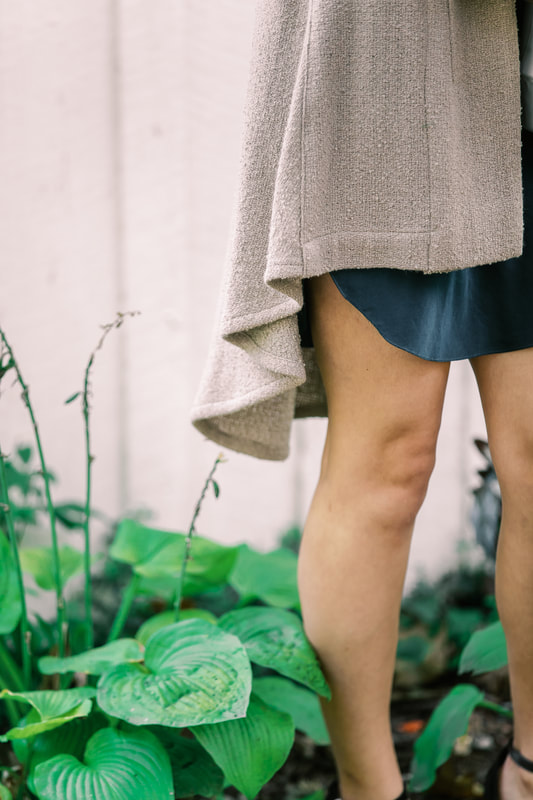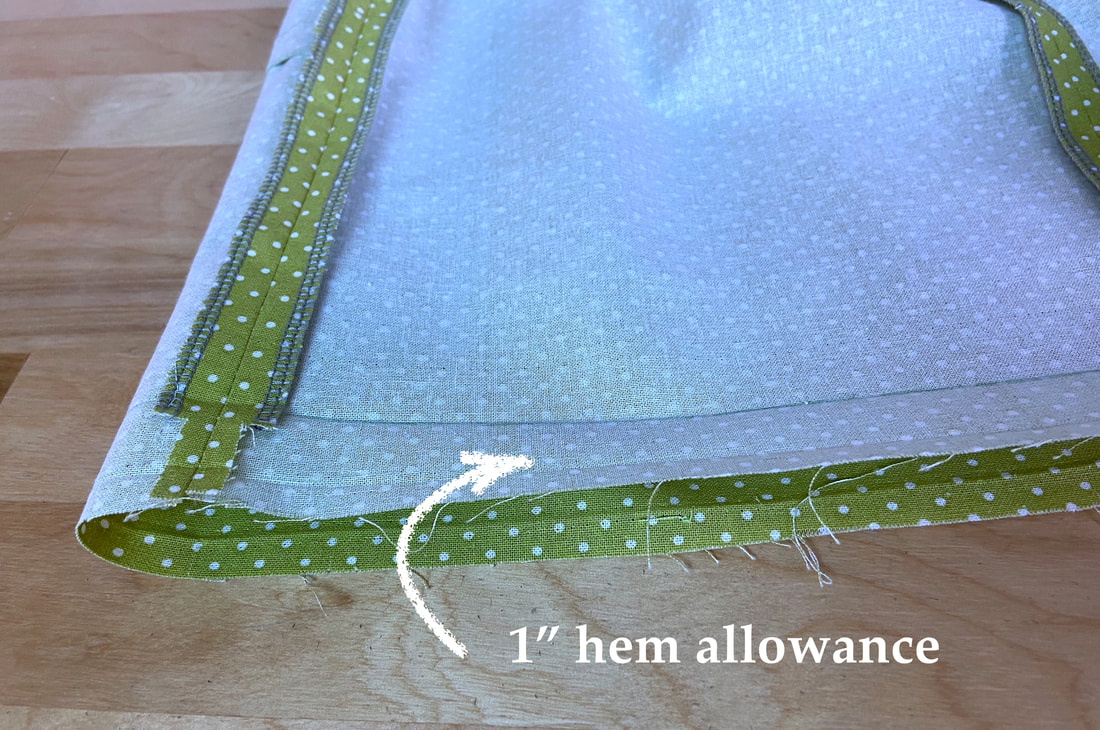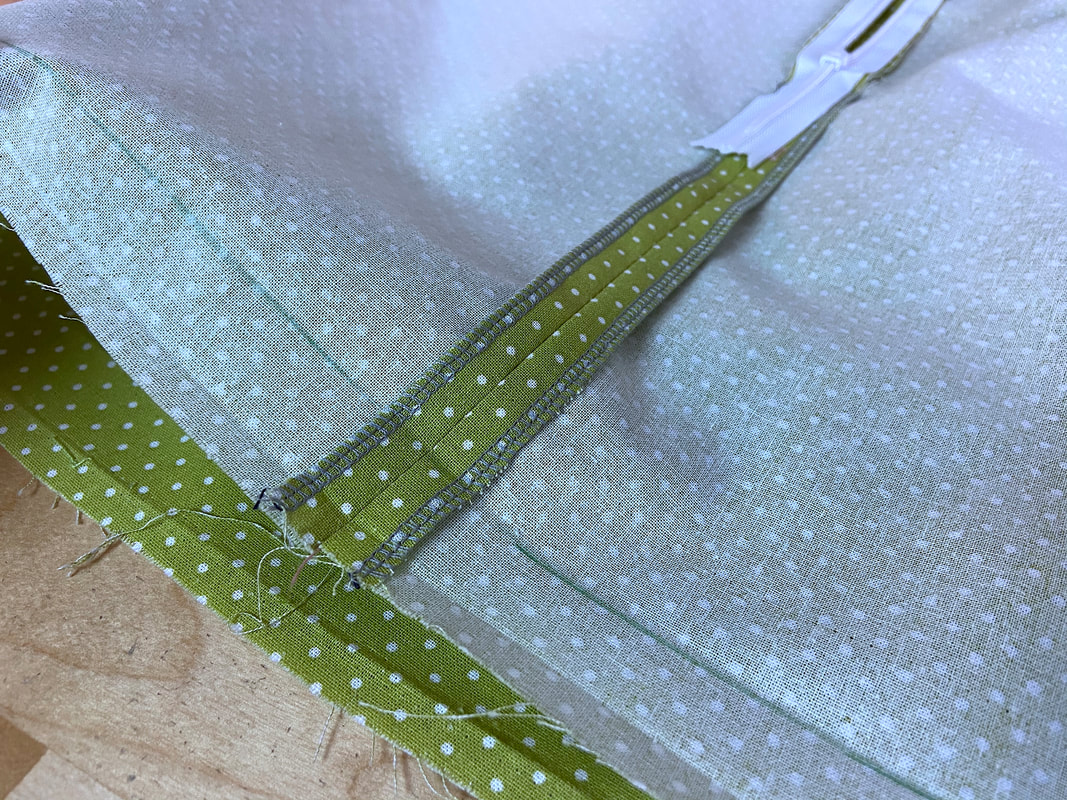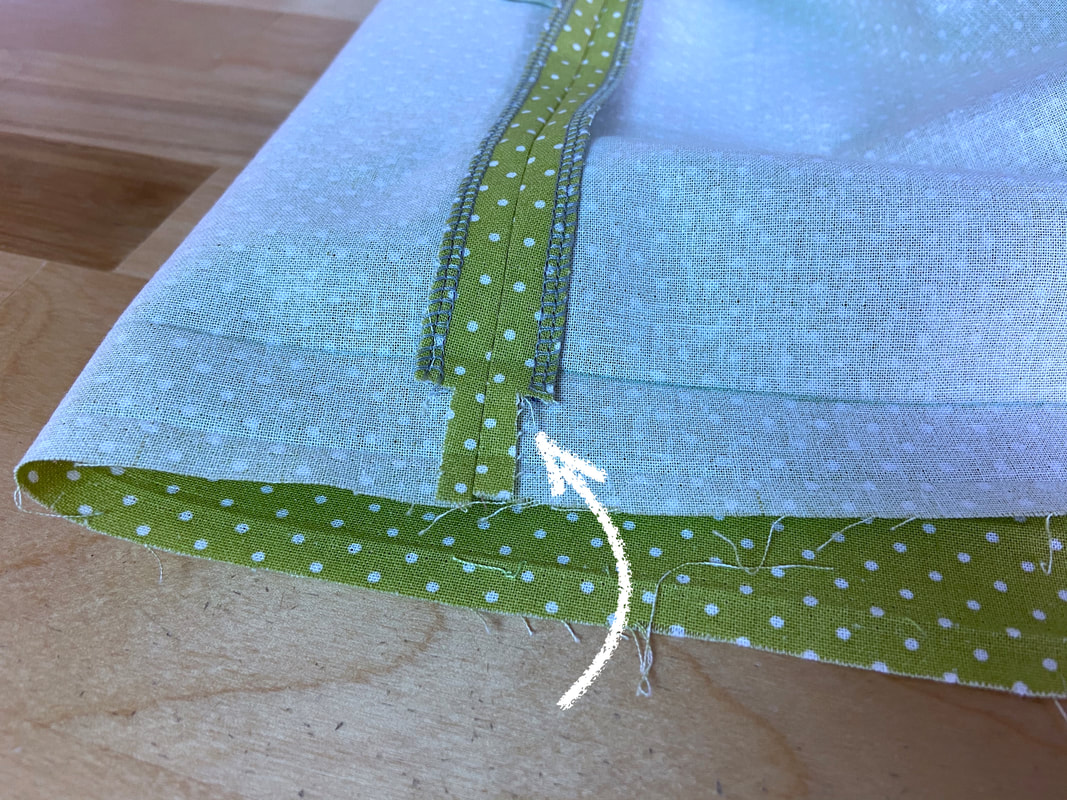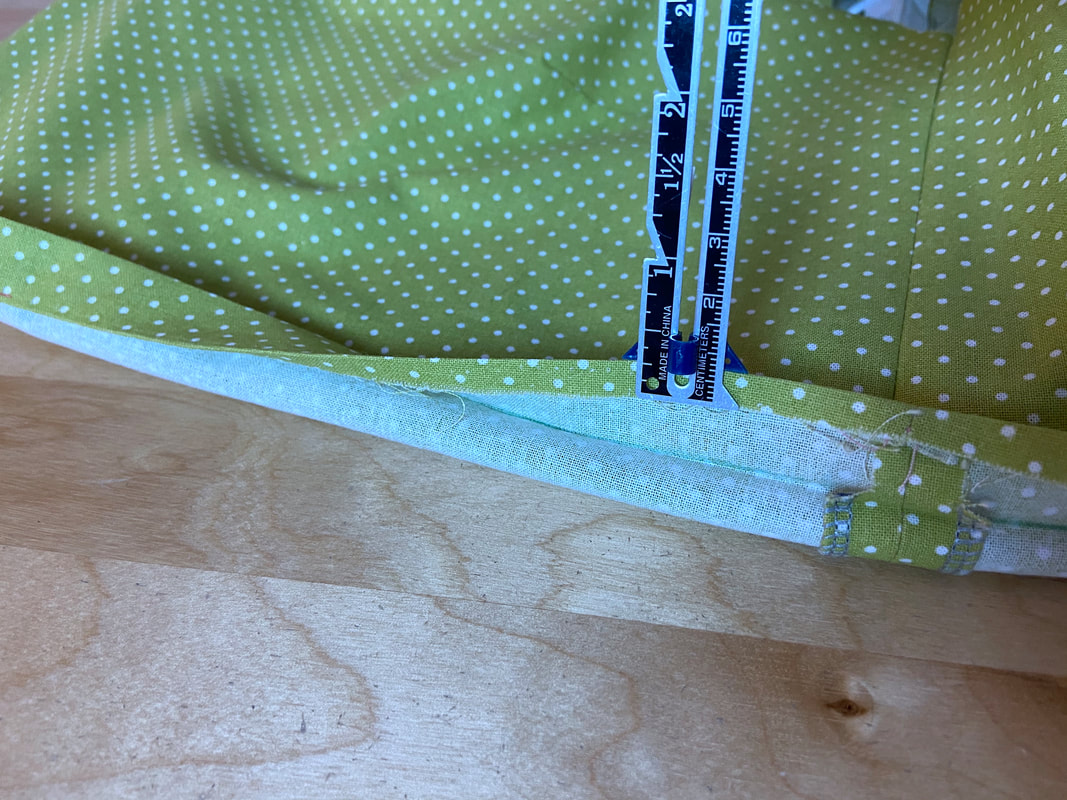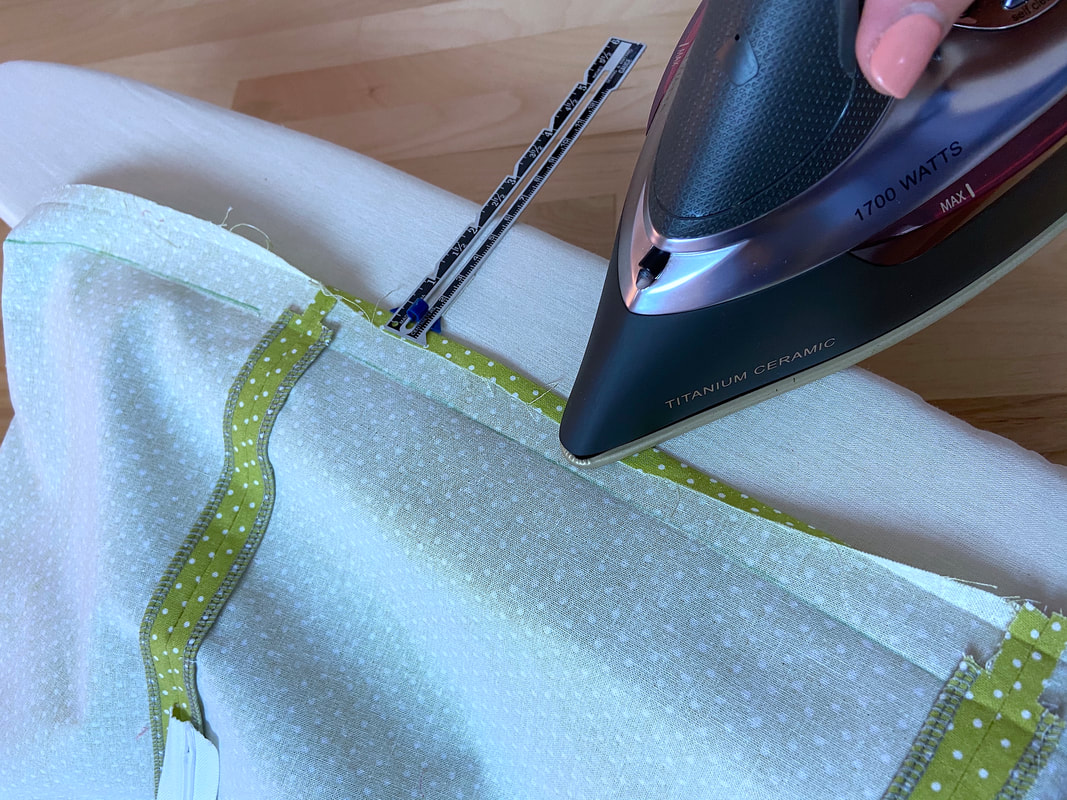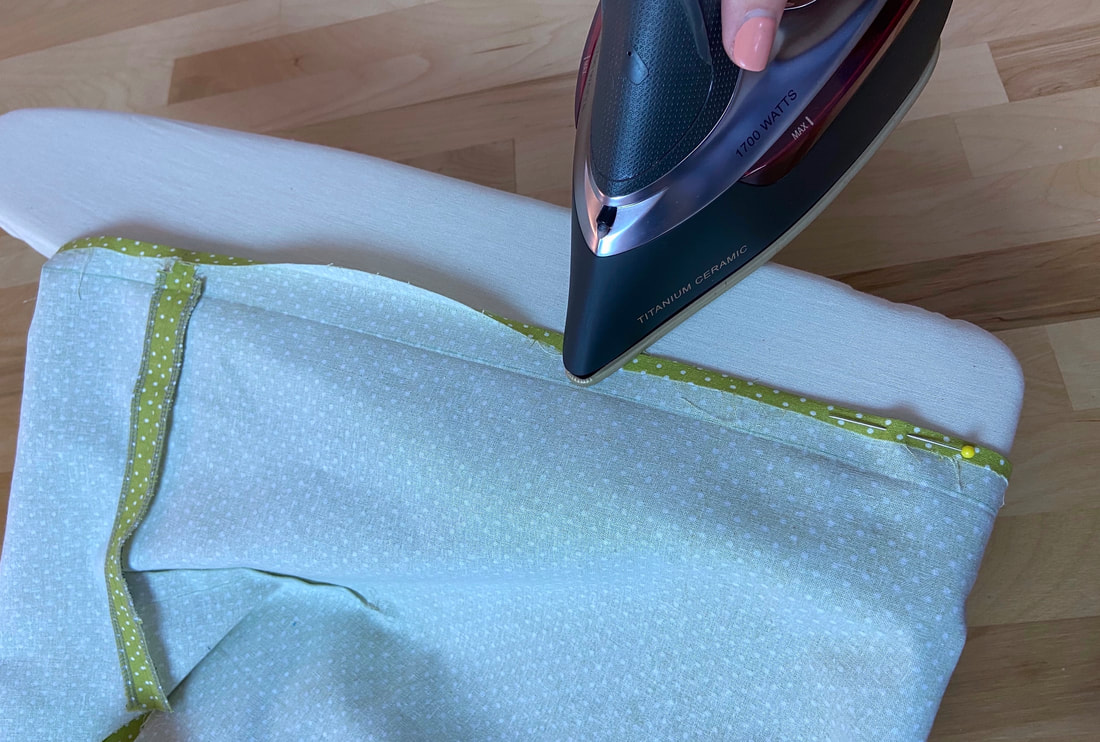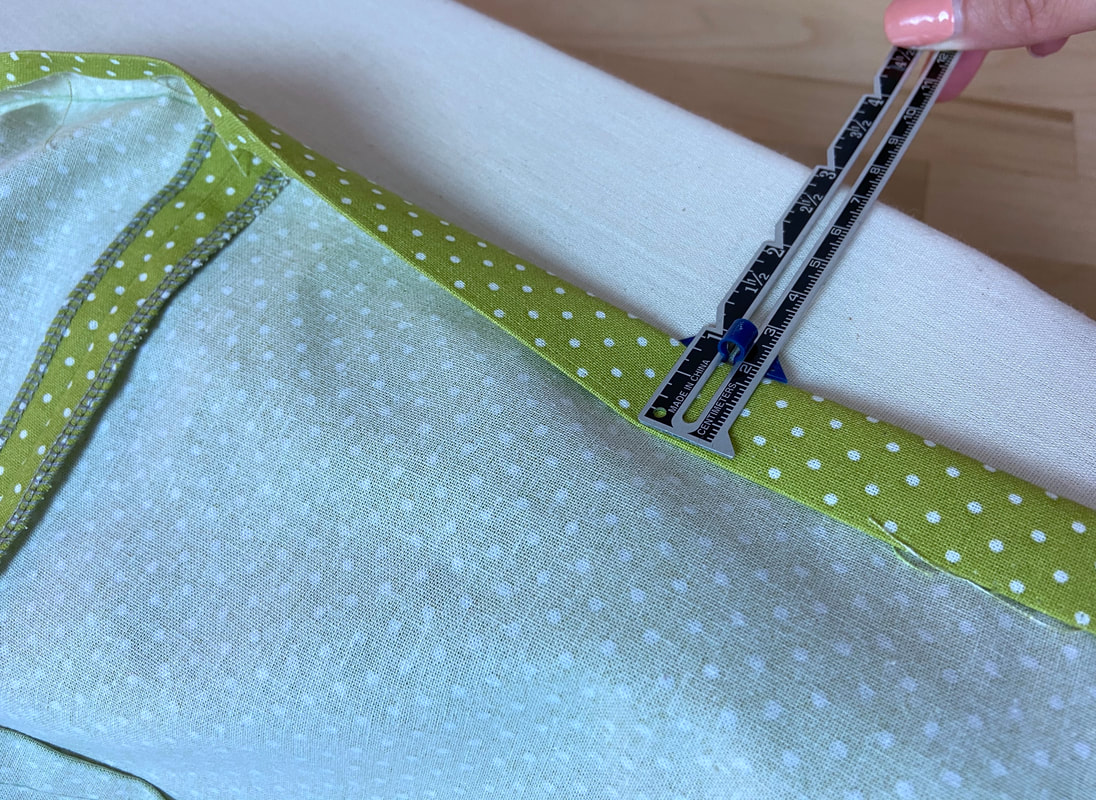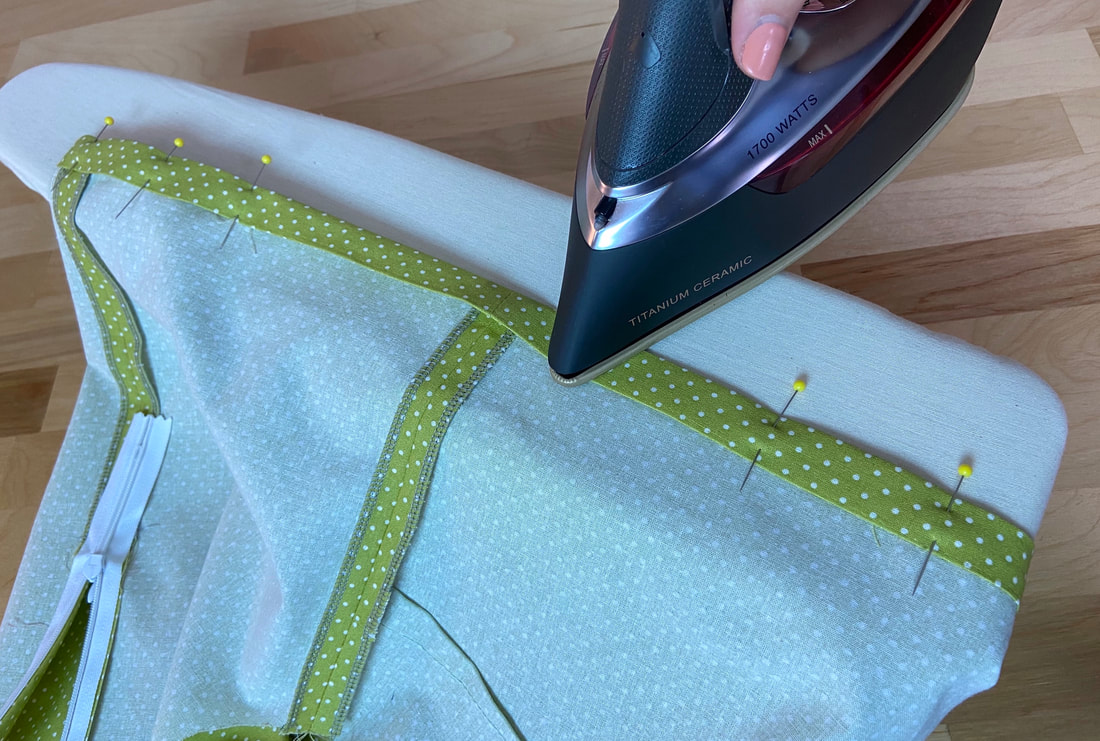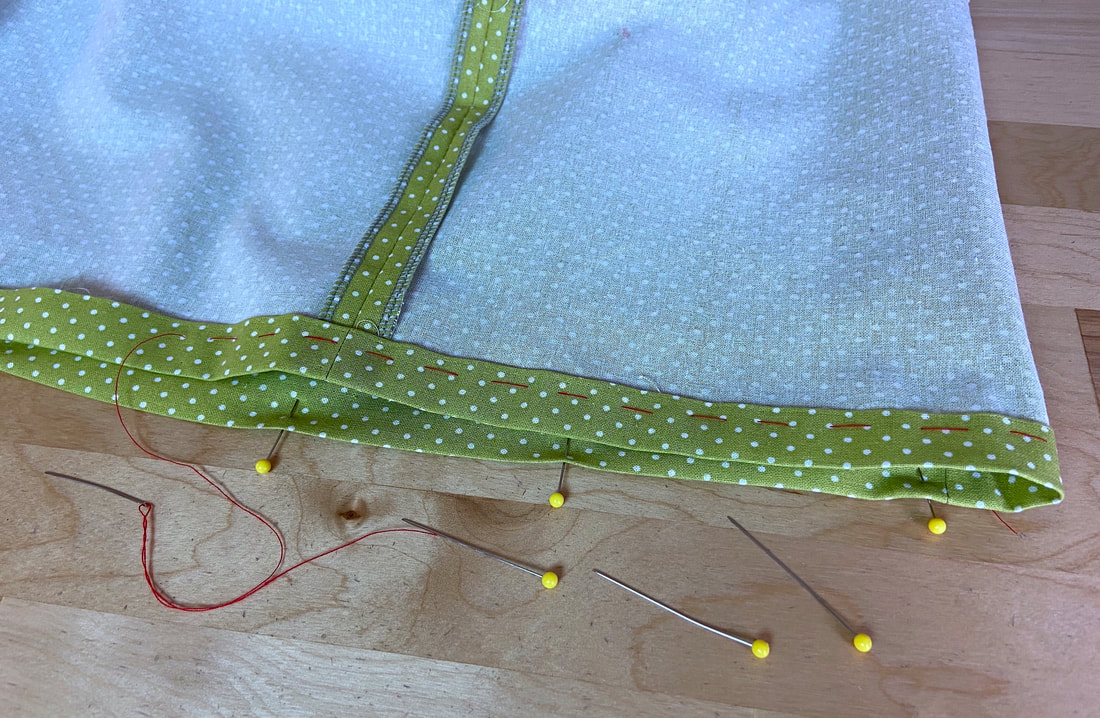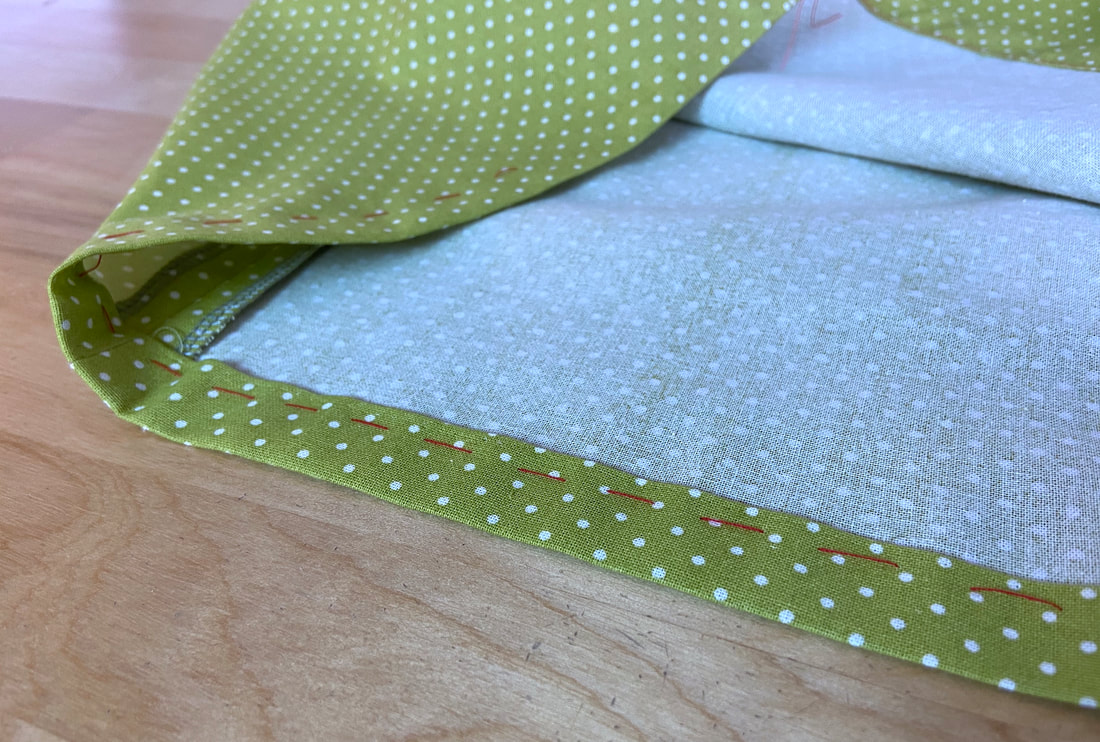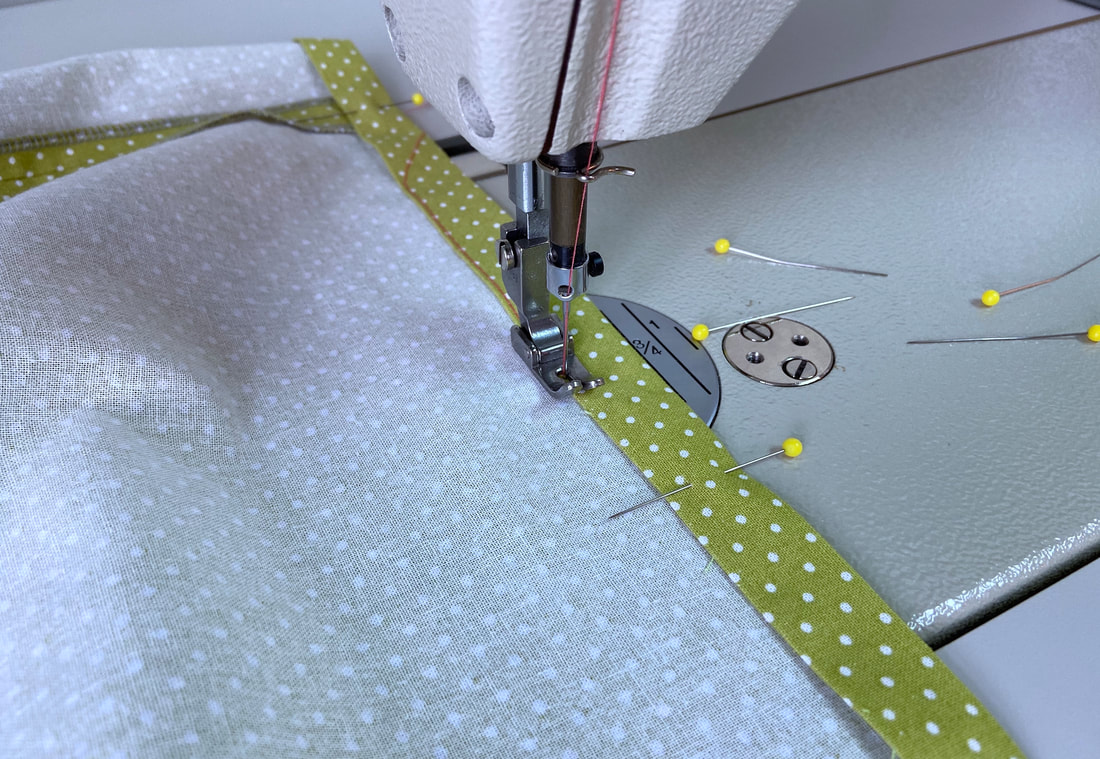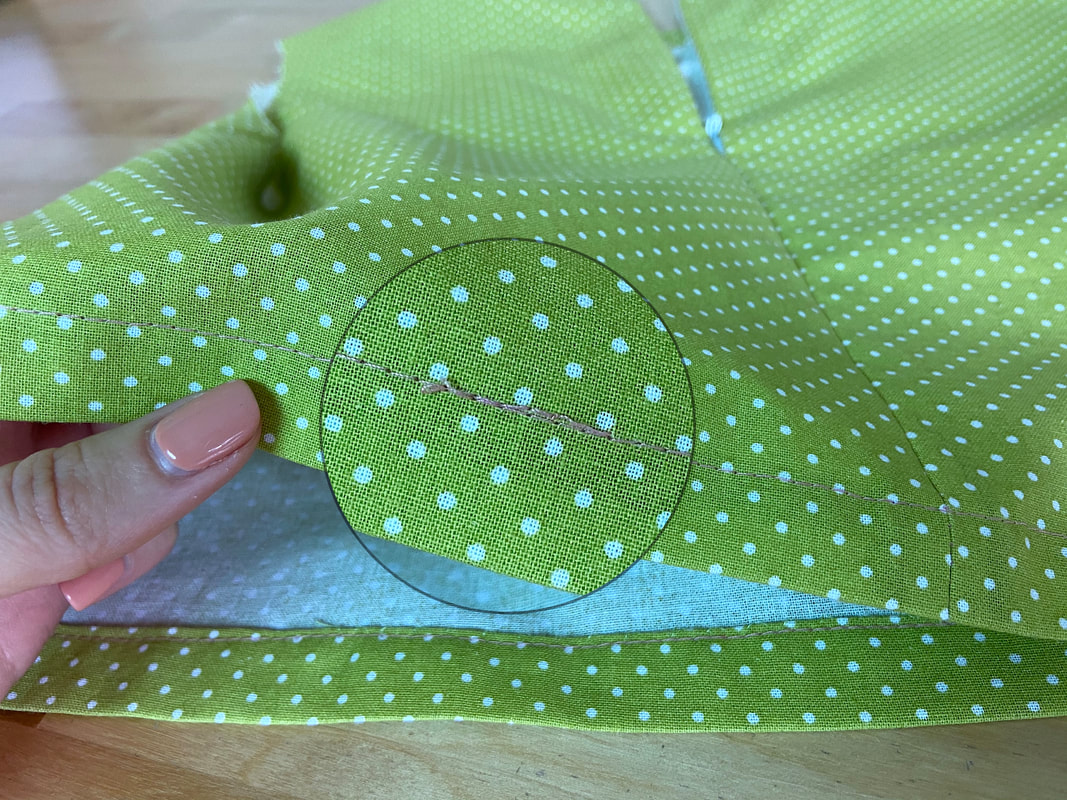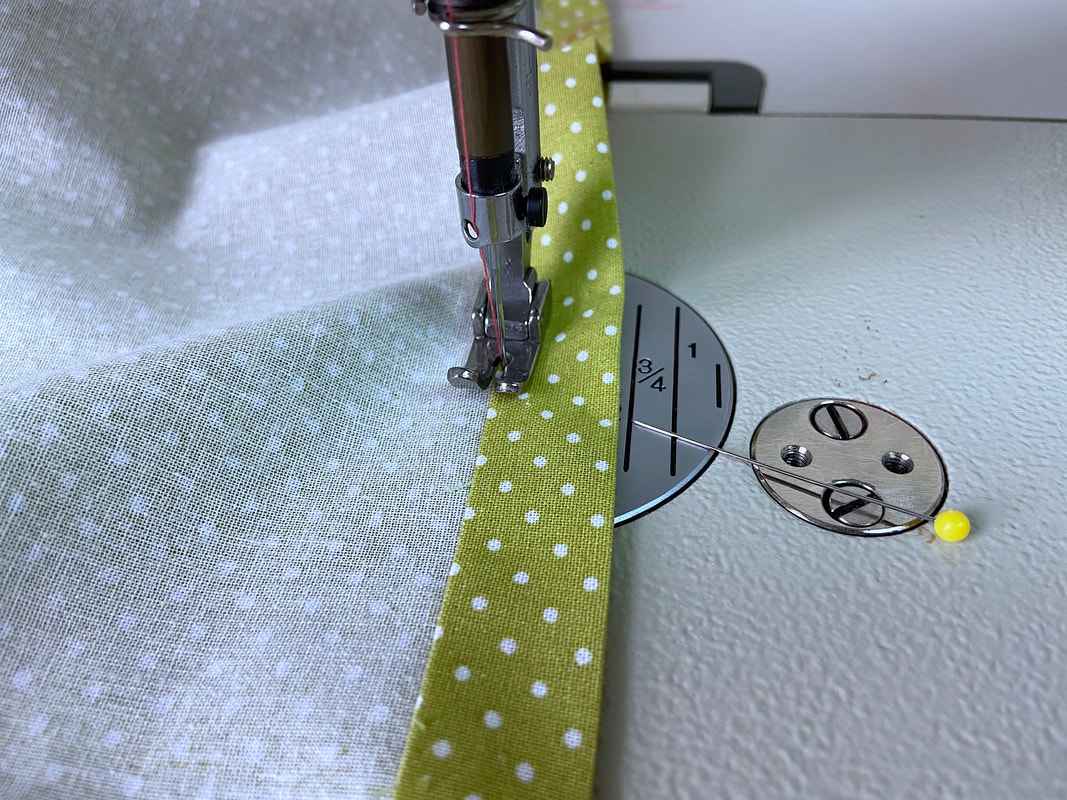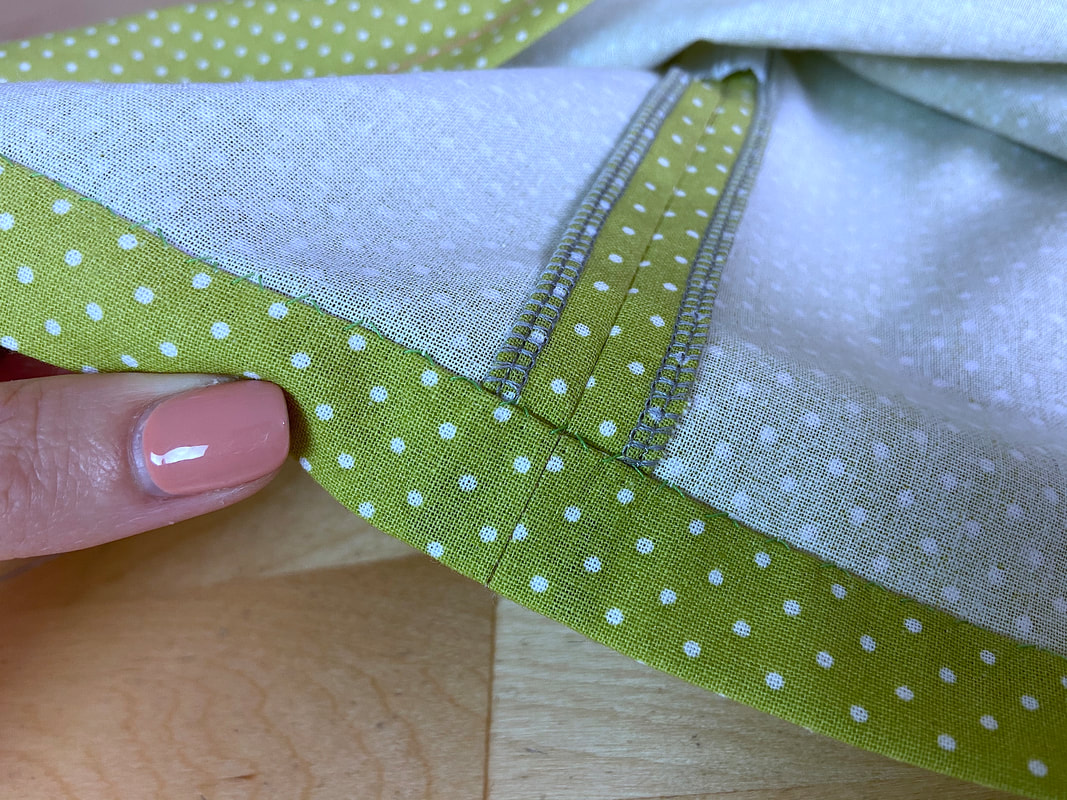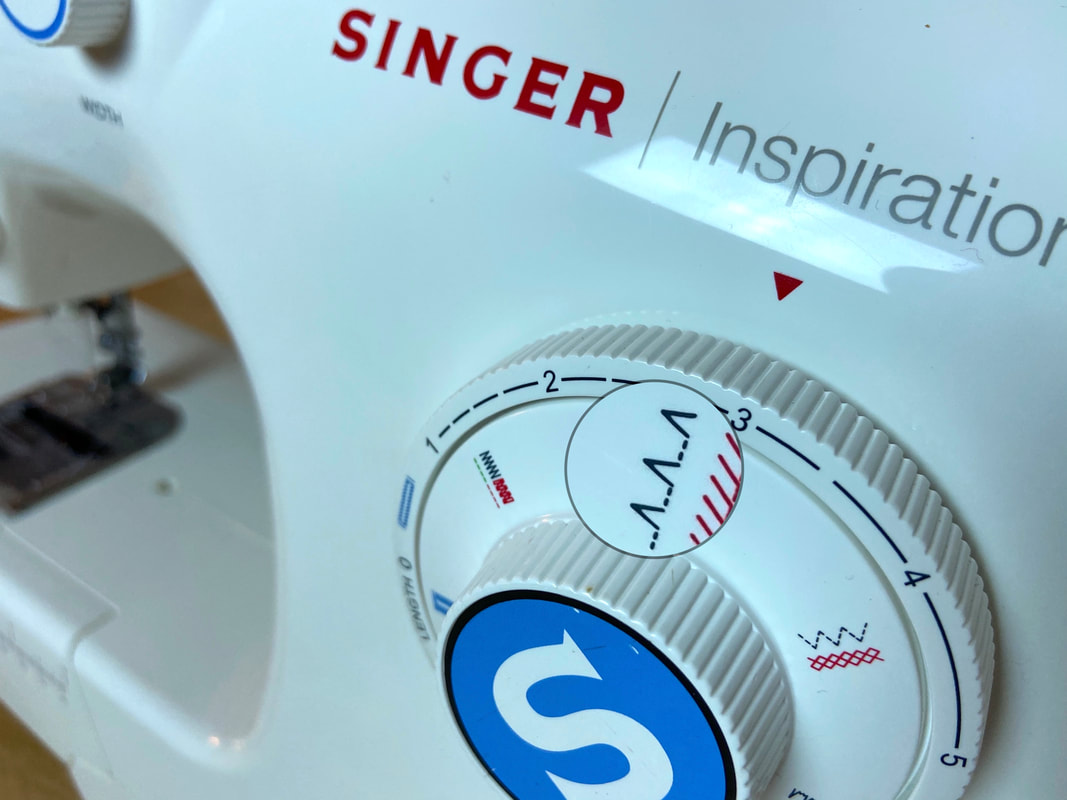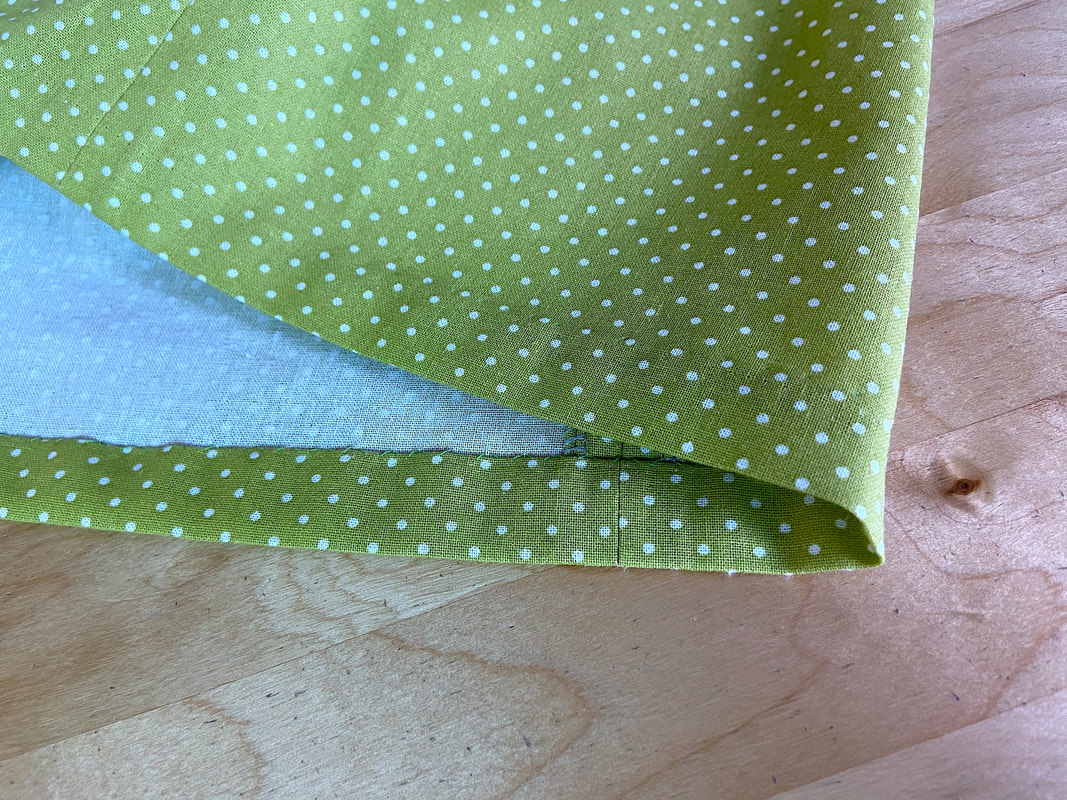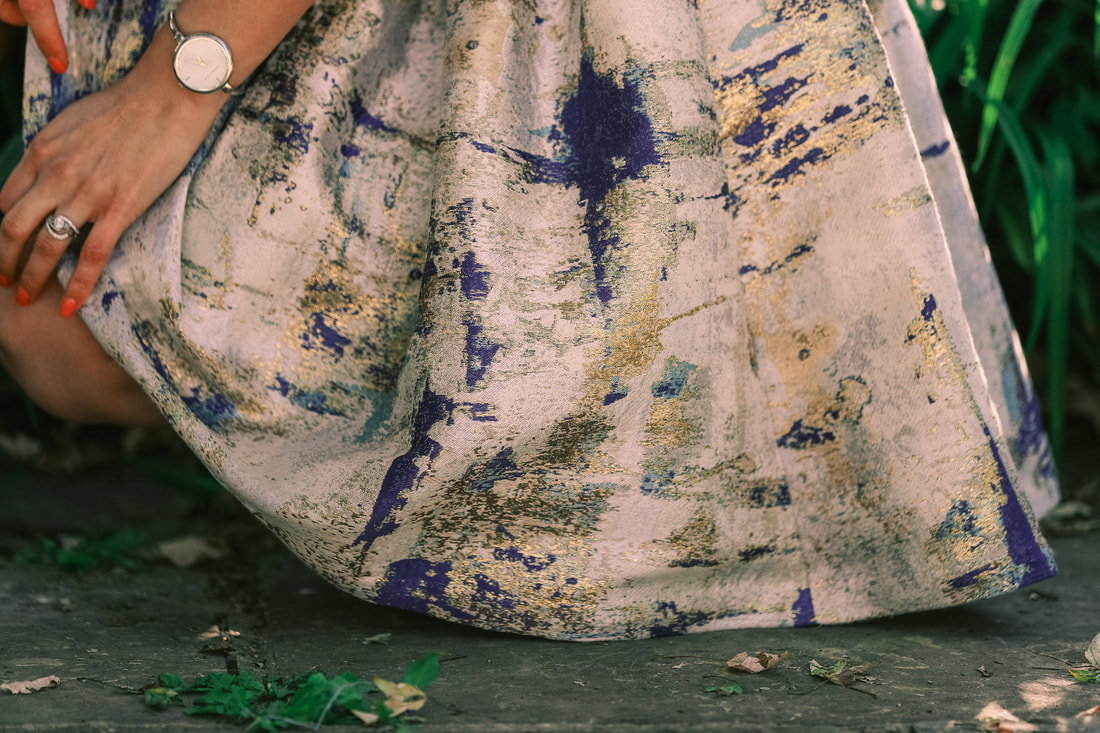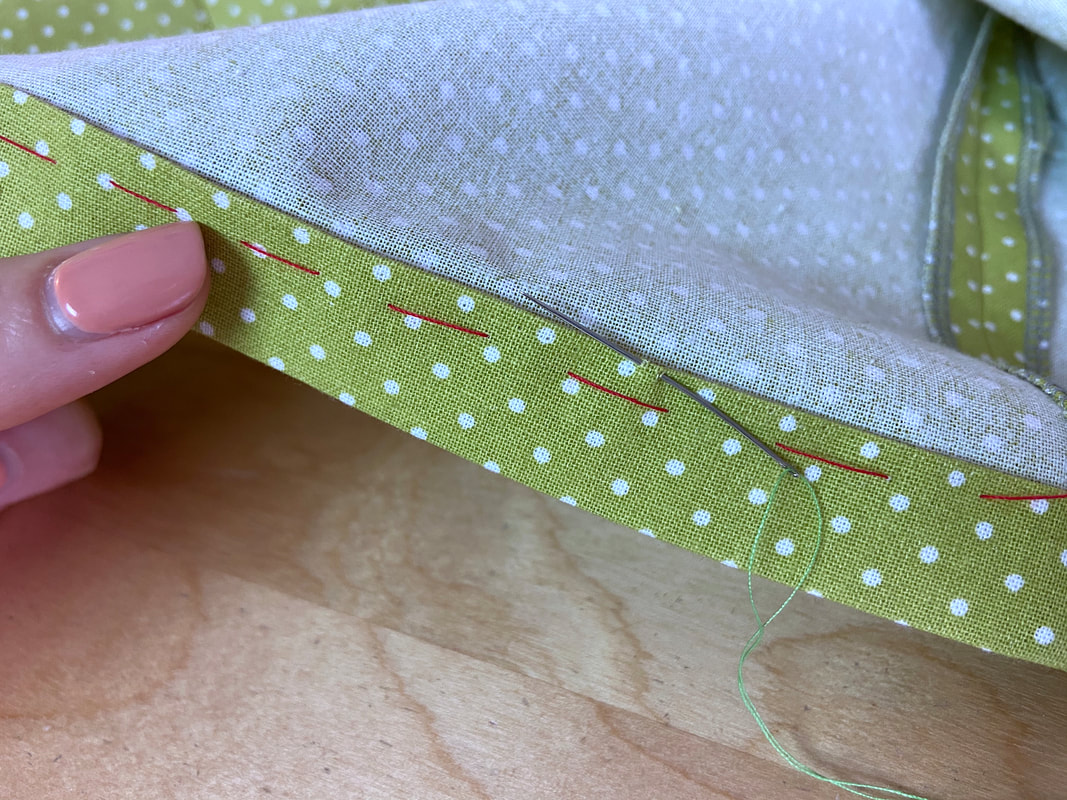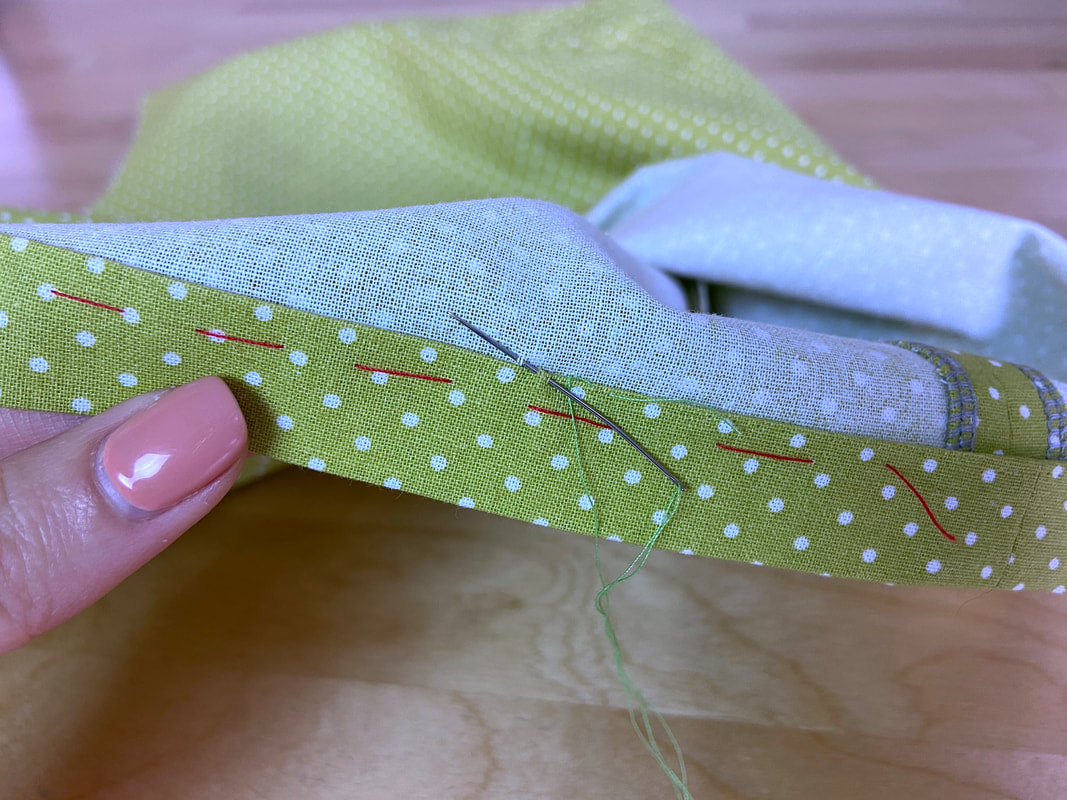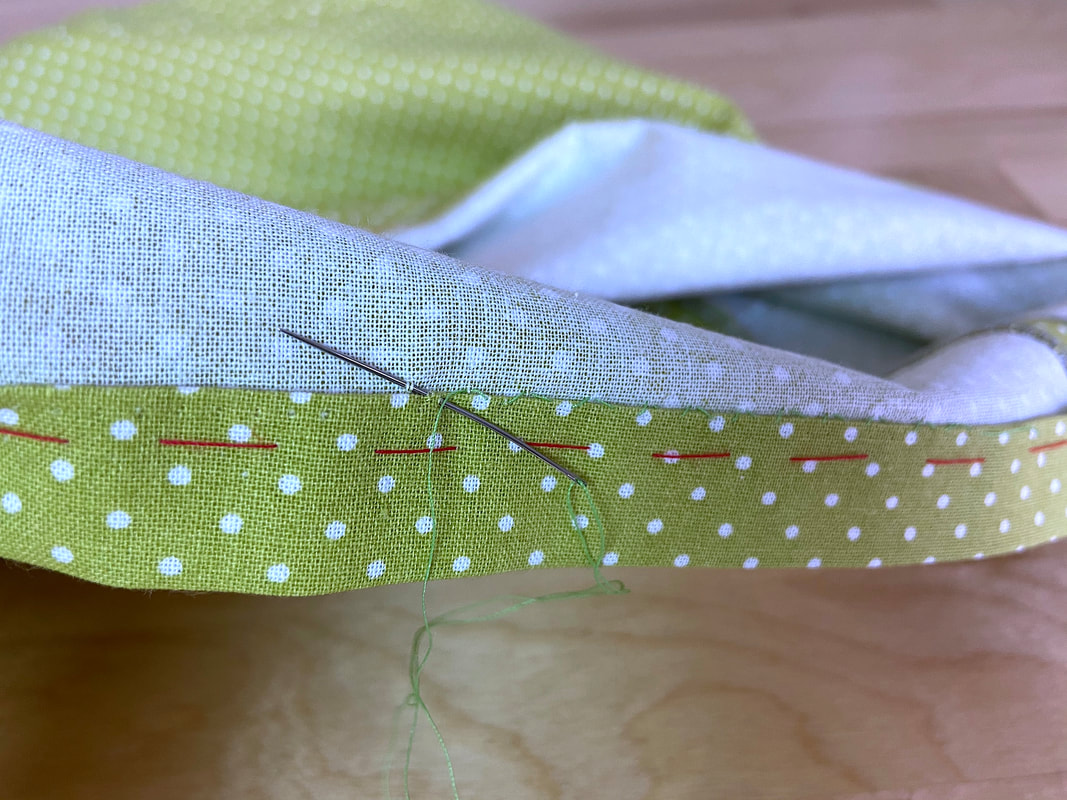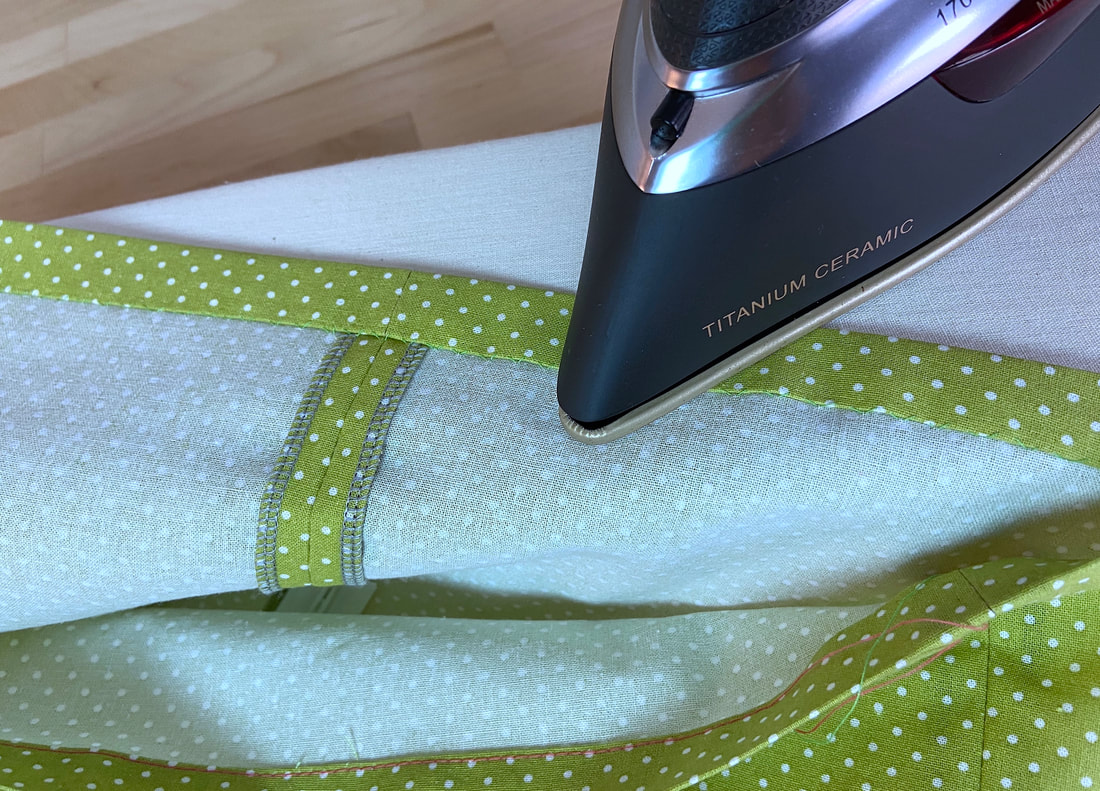A double fold machine stitched hemline is perhaps one of the most convenient and widely used in dressmaking.
Just like the single fold style, a double folded hem leaves a visible topstitch along the garment’s hemline. On the underside of the hem, the garment’s bottom raw edge is enclosed within a second fold. This second fold not only provides an easy way to clean finish this otherwise exposed edge, it also provides a clean appearance that looks just as professional on the face of the garment as it does on its wrong side.
A double machine-stitched hem may require a longer hem allowance to account for the extra needed in the second fold. Anywhere from 3/8” to 3” is suitable, providing that it works with the thickness and drape of the fabric at hand. To keep things simple, the hem allowance in the example below is 1”.
As is true for any turned-under hem finish, a double folded machine stitched technique is applied only after all the garment’s crossing seams have been stitched, clean finished and ironed.
In addition, it is highly recommended that the seam allowance portions intersecting the hem allowance surface are trimmed halfway down to minimize bulk. Doing so is especially helpful if working with thick, heavy fabrics. Keep in mind that since this finish requires the fabric edge to be folded up twice, the second fold will add extra layers of bulk at the crossing seams.
As you’ll see below, the hem's raw edge is folded such that the first fold line corresponds to the garment’s finished hemline and the second fold is added for the sole purpose of enclosing the fabric’s cut edge.
While the first fold is always measured and turned at the full hem allowance length (1” in this tutorial), the width of the second fold is based on the fabric and its structure.
For regular, low fraying fabrics that are light-to-medium weight, folding the cut edge at ¼” should be sufficient to achieve a smooth, durable finish. If the fabric is thick, loosely woven or unravels easily, the second fold should be wider such that it safely encases the cut edge- ½” is a good start.
Sewing A Machine Stitched Double-Folded Hem
As mentioned above, make sure all seams that intersect the hem are clean finished, trimmed and ironed appropriately,
1. Working on an ironing board, fold the cut edge towards the wrong side at ¼”, if working with low fraying fabrics, and ½” if working with thick and loosely woven fabric. Use a gage pointer or ruler to measure this distance from the cut edge inward. Iron as you fold.
2. Continue folding and ironing along the entire edge of the hemline as described above. Insert a few pins along the way if you notice the ironed crease does not lay flat.
3. Next, fold the edge again such that the fold created aligns with the garment’s finished hemline.
In this case, the hem allowance is 1”. Since the cut edge was already folded in at ¼”, measure the remaining ¾” up from the existing folded edge (applied in Step 2) and fold again at this distance.
Insert a few pins perpendicularly to secure. The fabric’s raw edge should now be completely enclosed by the second fold.
4. Continue folding, ironing and inserting pins perpendicular to the edge until the entire hemline is complete.
5. At this point, you should consider hand basting the folded layers in this position, especially if the fabric is slippery and difficult to sew.
6. Working on the wrong side of the hemline, machine stitch next to the inner fold line to permanently enclose the fabric's cut edge and complete the hemline.
To permanently lock the threads, overlap the start and end of the stitch as shown above.
Use the folded edge as a stitching guide and remove each pin as you approach it- never sew through the pins.
7. As a final step, iron the topstitched hem in the direction the stitch was applied.
Stitching A Double-Fold Hem By Hand
If machine topstitching is not appropriate for your fabric or design, a double folded hem can be completed by hand using a blind stitch application.
This hand-applied hemming technique works great for dressy, tailored styles which don’t respond well to machine topstitching. Due to its clean look on both the wrong and right side of the garment, a double folded blind stitched finish is perfect for unlined or open styles which expose the garment’s wrong side.
A blind stitched finish can also be applied using the blind stitch setting on your sewing machine. In this case, the double folded edge is ironed and prepared exactly as you would with the topstitched version described above. The only difference is in how the inner fold is secured to the garment surface: As opposed to a machine topstitch that goes straight through to the garment’s face side, a blind stitch catches a couple of threads from the underside of the fabric surface and connects it to the inner folded edge.
The stitch then alternates between the fold and garment surface to complete the application. Hand stitching through just a couple of threads on the garment’s underside results in a hem that has no visible stitching on its face side.
Using blind stitching with a double folded hem provides another advantage- whether you use a catch stitch or a slipstitch as your primary technique, the stitching will appear almost invisible on the wrong side of the garment as well.
1. Repeat steps 1-6 described above to fold, iron and pin (or hand baste) the hem allowance.
2. Using matching color thread, hand stitch in place a few times on the inner hem allowance fold to secure the stitch.
3. A slipstitch is a type of blind stitching which allows you to stitch through a folded edge, enclosing the thread for less stitch visibility.
To slipstitch, apply a 1/8”-long stitch directly through the fold, then catch 2-3 threads from the wrong side of the garment surface. Stitch again through the folded edge catching another set of 2-3 threads from the fabric surface.
Learn more about slipstitching and other blind stitching styles in this tutorial: Hand-Applied Blind Stitches
4. Continue slipstitching until the entire hem is complete. The slipstitch should be almost invisible on both the face and wrong side of the garment. To secure and prevent the stitches from coming undone, stitch in place a few times at the same location as the starting point.
5. Iron the completed hemline for a smooth professional finish. Use a protective cloth if/when ironing directly on the right side of the garment.

